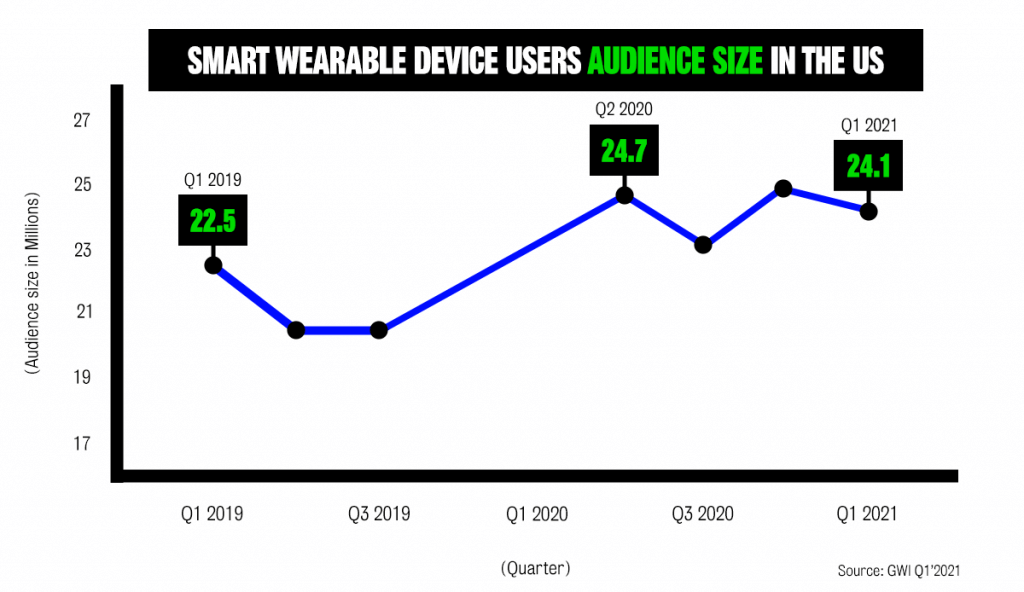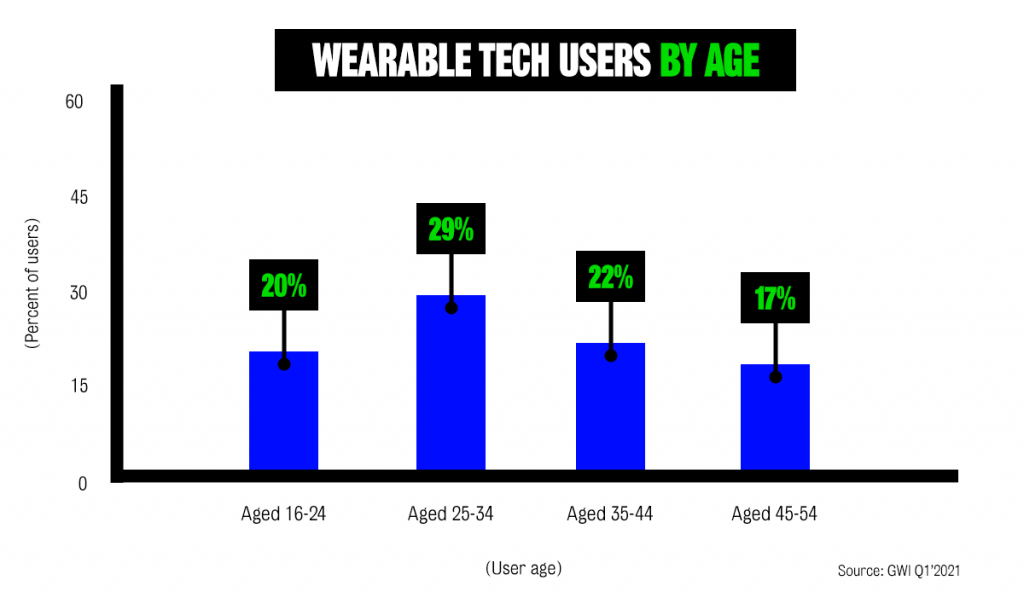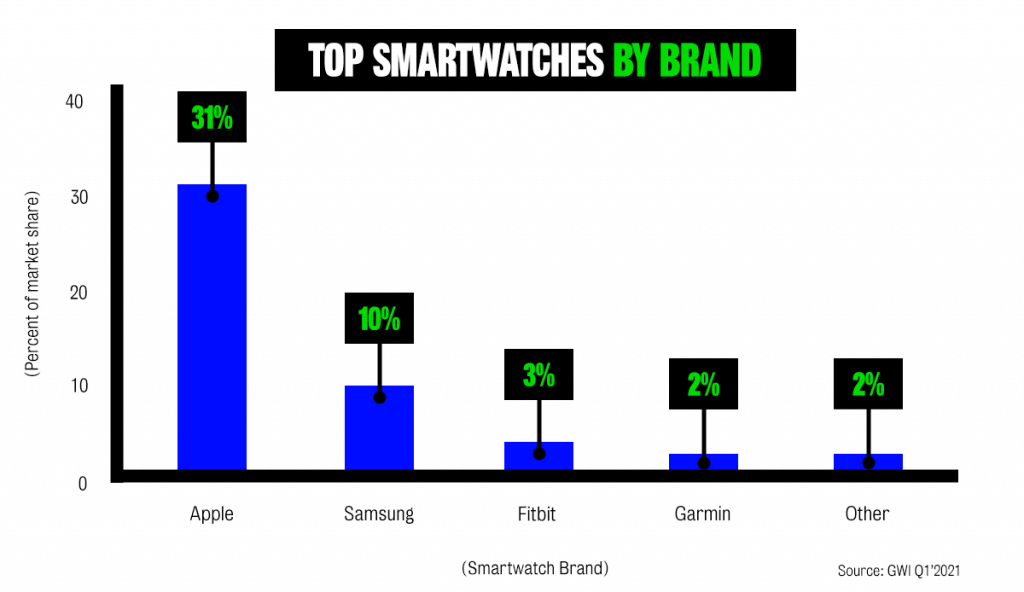Tracking Wearable Tech Trends in the USA

From smartwatches to clothing, wearable tech is a growing sector as audiences adopt wearable devices into everyday life.
Early adopters of smartwatches and fitness trackers were ahead of the game, now it seems others are catching up. According to Gartner, Inc, worldwide user spending on wearable devices totaled $81.5 billion in 2021, an 18.1% increase from $69 billion in 2020. As consumers become more conscious about health, wellbeing, and changes to lifestyle (often due to COVID). In the USA, growth in the sector is also seeing pace, with US consumers’ use of wearables increasing from 9% to 33% in four years as of 2021.
The Deloitte 2021 Connectivity and Mobile trends Survey showed that 58% of US households own a smartwatch or fitness tracker, and 39% of Americans personally own a smartwatch or fitness tracker. In the USA, 14% of customers have bought their fitness devices since the start of COVID, and activities such as counting steps, workout performance, heart health, and sleep quality monitoring are amongst the most popular activities.
Audiences
The US wearable tech audience in the US is approximately 24.1 million people, with a 50:50 gender split. The majority of users are under 45 years, with over half the audience between the ages of 25 and 44 years, in addition, 50% of users are from high-income households and employed full time.
Not surprisingly, interests in fitness and personal wellbeing are the key drivers amongst wearable tech users. 61% are interested in their health and personal care, and 55% have an interest in fitness/exercise and healthy food and drinks.

These audiences spend a lot of time researching health and health products as well as tracking fitness, so ensuring you have ample product benefits and descriptions explained online and in performance marketing should help engage these audiences as they go about their research.
From a product point of view, wearable tech audiences in the USA are technology enthusiasts and are brand loyal, with 68% more likely to pay for a brand they know. This comes across strongly when looking at the most popular smartwatch brands, with Apple leading the field at 31% of users, Samsung taking 10%, Fitbit 3%, and Garmin with 2% following the field.


The purchase journey
Word of mouth is an important route to purchase for wearable tech users, with 39% of customers saying WOM is key to them discovering new products. Due to their high interest in researching health, fitness, and technology customer reviews, search and product/brand websites are important sources of information for these enthusiasts. In order to attract their attention, brands should consider messaging highlighting benefits, for example, wearable tech customers are interested in free delivery, coupons/discounts, offering easy returns is important to them. Remember, these are brand-loyal customers who are looking for reliability and smart, technically advanced features.
Media channels
If you’re seeking to reach wearable tech audiences then social media channels, especially Facebook, Instagram, Twitter, and Snap are all channels frequented by wearable tech users. They also spend significant time seeking entertainment, with Netflix, YouTube, Amazon Prime Video, Spotify, and iTunes all frequented channels. Spending time analyzing and testing performance creative is important to ensure you’re highlighting the right messaging and capturing attention. We’ve seen improvements in performance for wearable tech campaigns we run in the USA when creative features people and carousel formats in social channels.
In summary
Like so many aspects of everyday life, COVID accelerated the market for wearable tech, with habits such as counting steps, monitoring workouts, heart health, and sleep patterns all-seeing customer engagement, with some customers maintaining habits brought about by lockdowns a renewed focus on health & wellbeing is likely to continue to benefit wearable tech brands. However, with Apple dominating the market, wearable tech advertisers will have to think strategically to reach and engage target audiences. With a growing number of American consumers interested in their health & wellbeing, the time has never been better to capture the intent.

